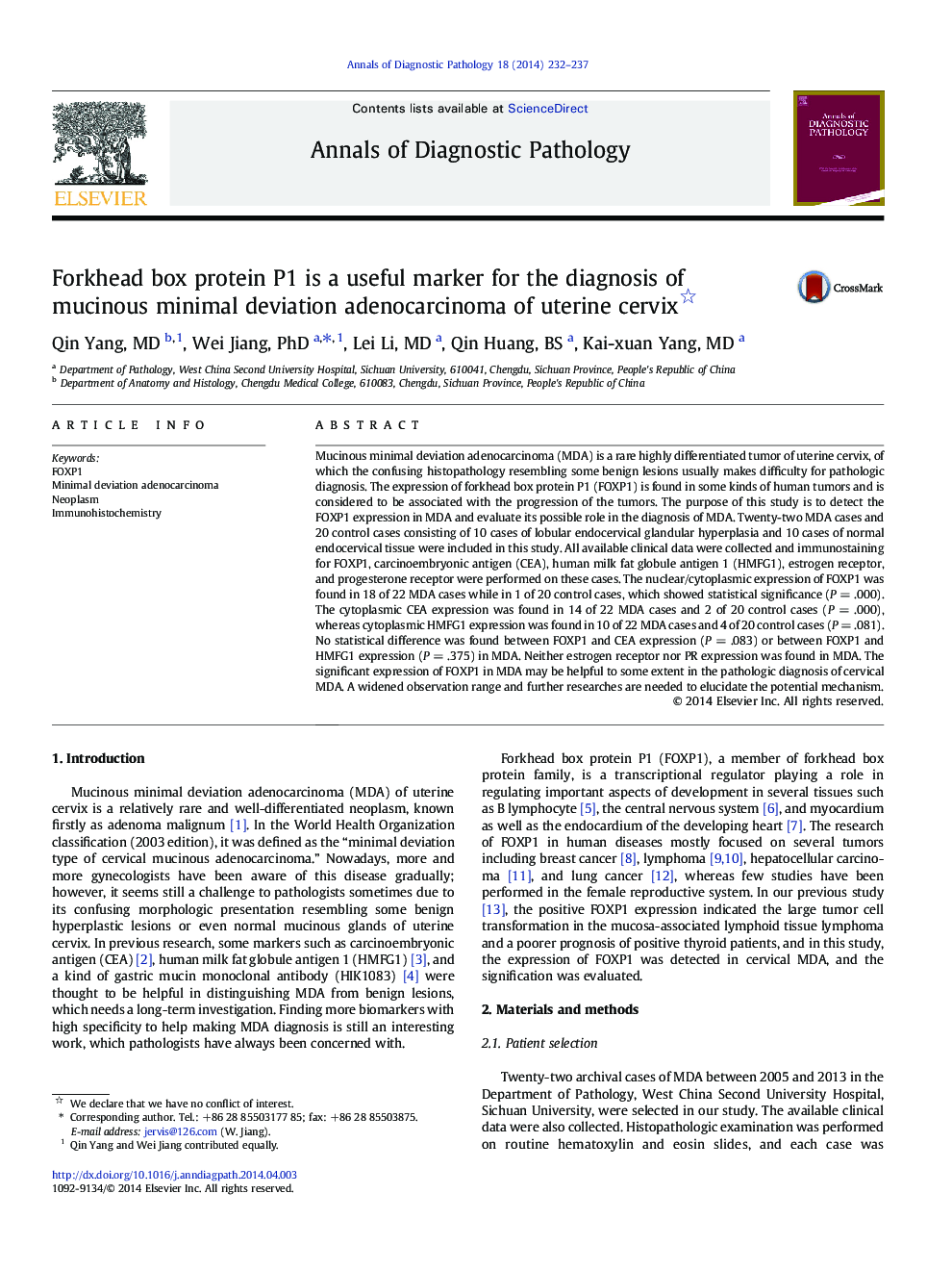| Article ID | Journal | Published Year | Pages | File Type |
|---|---|---|---|---|
| 4129817 | Annals of Diagnostic Pathology | 2014 | 6 Pages |
Mucinous minimal deviation adenocarcinoma (MDA) is a rare highly differentiated tumor of uterine cervix, of which the confusing histopathology resembling some benign lesions usually makes difficulty for pathologic diagnosis. The expression of forkhead box protein P1 (FOXP1) is found in some kinds of human tumors and is considered to be associated with the progression of the tumors. The purpose of this study is to detect the FOXP1 expression in MDA and evaluate its possible role in the diagnosis of MDA. Twenty-two MDA cases and 20 control cases consisting of 10 cases of lobular endocervical glandular hyperplasia and 10 cases of normal endocervical tissue were included in this study. All available clinical data were collected and immunostaining for FOXP1, carcinoembryonic antigen (CEA), human milk fat globule antigen 1 (HMFG1), estrogen receptor, and progesterone receptor were performed on these cases. The nuclear/cytoplasmic expression of FOXP1 was found in 18 of 22 MDA cases while in 1 of 20 control cases, which showed statistical significance (P = .000). The cytoplasmic CEA expression was found in 14 of 22 MDA cases and 2 of 20 control cases (P = .000), whereas cytoplasmic HMFG1 expression was found in 10 of 22 MDA cases and 4 of 20 control cases (P = .081). No statistical difference was found between FOXP1 and CEA expression (P = .083) or between FOXP1 and HMFG1 expression (P = .375) in MDA. Neither estrogen receptor nor PR expression was found in MDA. The significant expression of FOXP1 in MDA may be helpful to some extent in the pathologic diagnosis of cervical MDA. A widened observation range and further researches are needed to elucidate the potential mechanism.
